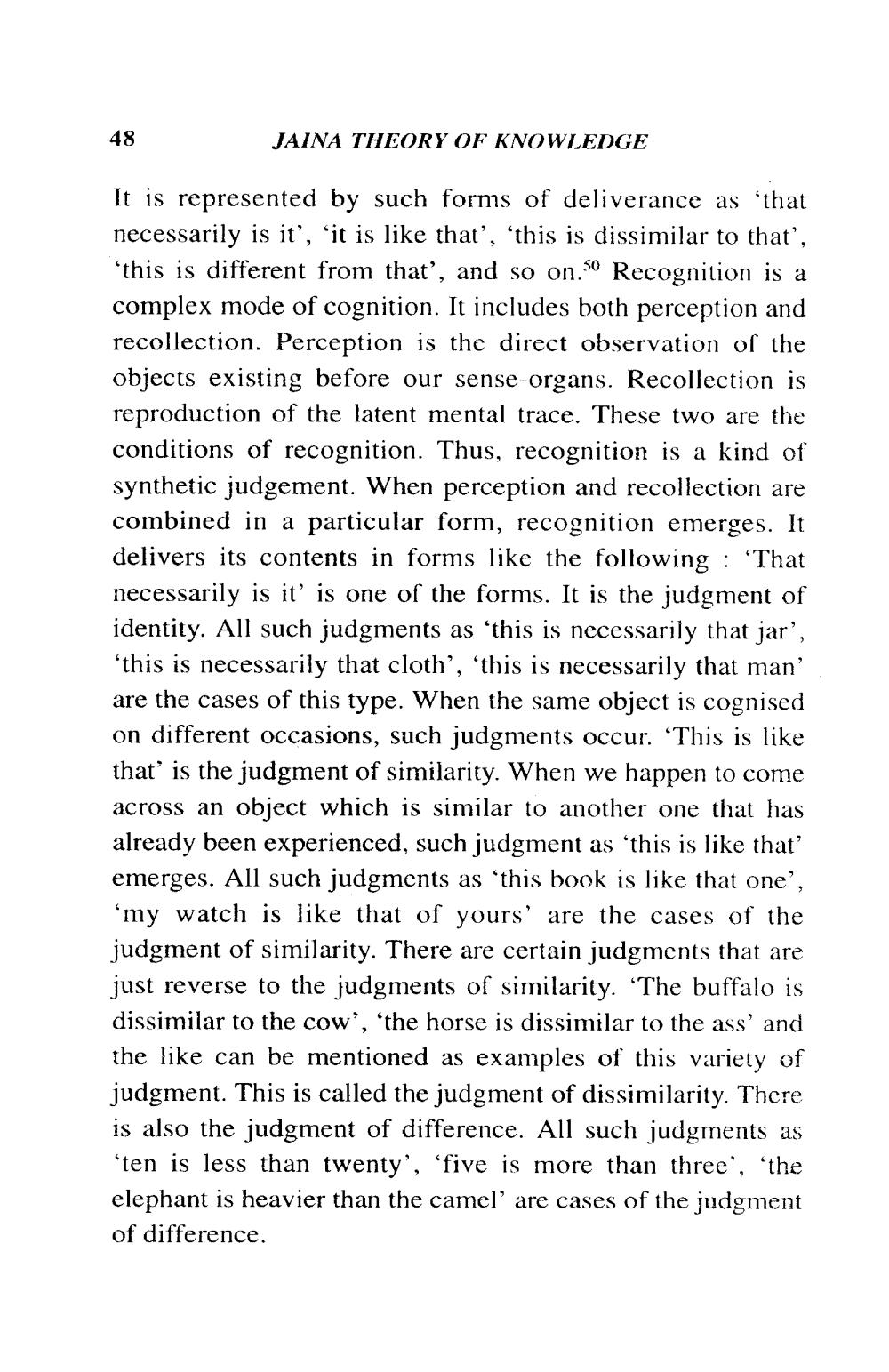________________
48
JAINA THEORY OF KNOWLEDGE
It is represented by such forms of deliverance as that necessarily is it', 'it is like that', 'this is dissimilar to that',
this is different from that, and so on.s0 Recognition is a complex mode of cognition. It includes both perception and recollection. Perception is the direct observation of the objects existing before our sense-organs. Recollection is reproduction of the latent mental trace. These two are the conditions of recognition. Thus, recognition is a kind of synthetic judgement. When perception and recollection are combined in a particular form, recognition emerges. It delivers its contents in forms like the following: “That necessarily is it is one of the forms. It is the judgment of identity. All such judgments as 'this is necessarily that jar', “this is necessarily that cloth’, this is necessarily that man' are the cases of this type. When the same object is cognised on different occasions, such judgments occur. “This is like that is the judgment of similarity. When we happen to come across an object which is similar to another one that has already been experienced, such judgment as this is like that emerges. All such judgments as 'this book is like that one', 'my watch is like that of yours' are the cases of the judgment of similarity. There are certain judgments that are just reverse to the judgments of similarity. “The buffalo is dissimilar to the cow', 'the horse is dissimilar to the ass' and the like can be mentioned as examples of this variety of judgment. This is called the judgment of dissimilarity. There is also the judgment of difference. All such judgments as 'ten is less than twenty', 'five is more than three', 'the elephant is heavier than the camel are cases of the judgment of difference.




